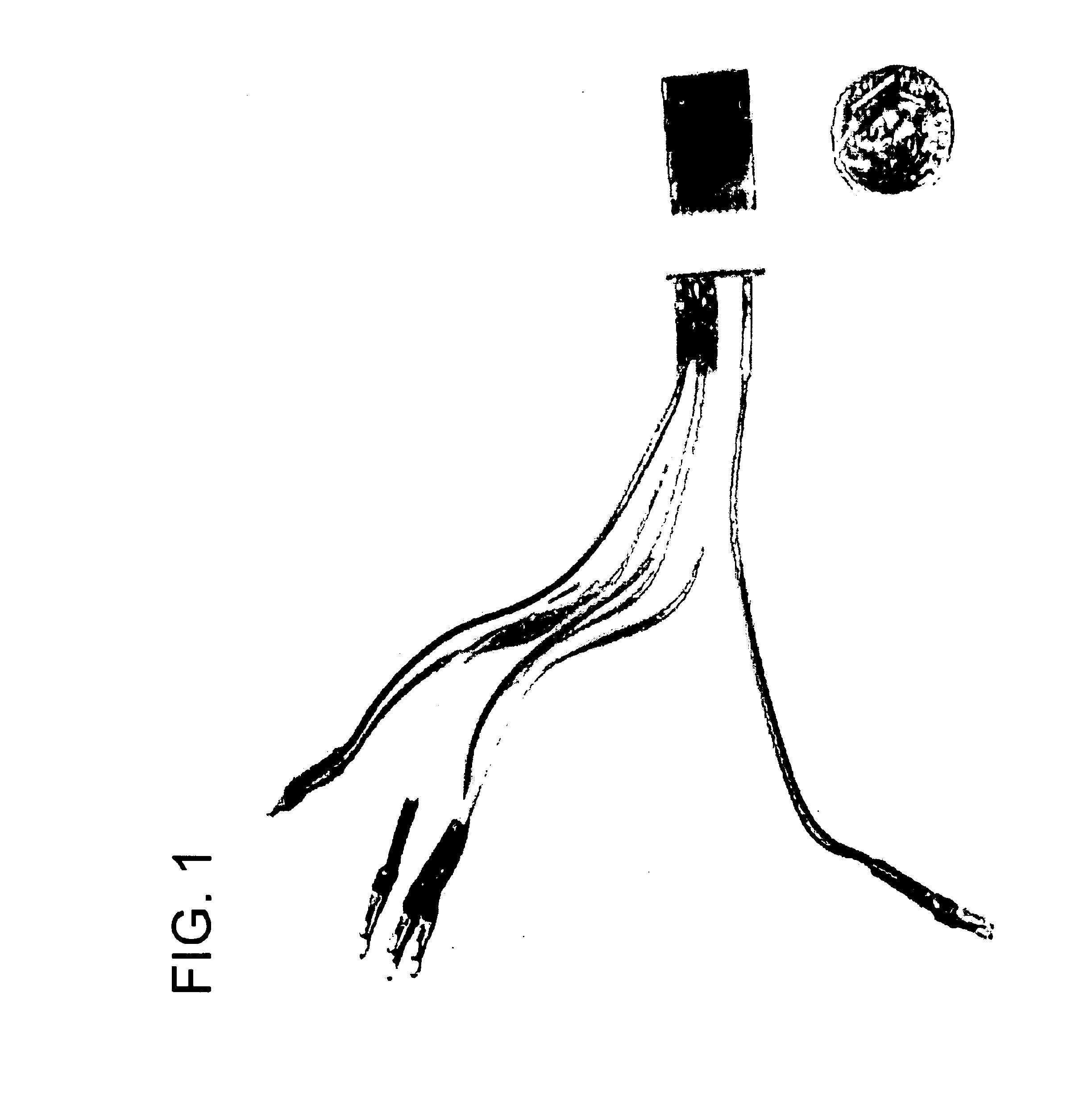Microvolume immunoabsorbant assays with amplified electrochemical detection
a technology of immunoabsorbant assay and amplified electrochemical detection, which is applied in the direction of fluid speed measurement, positive displacement liquid engine, chemical vapor deposition coating, etc., can solve the problems of not including a separation step, requiring unfavorable detection limits, and being susceptible to interference, so as to reduce the fouling of tnb and top layer, isolate the immunoabsorbant activity, and eliminate the effect of physisorption
- Summary
- Abstract
- Description
- Claims
- Application Information
AI Technical Summary
Benefits of technology
Problems solved by technology
Method used
Image
Examples
example
The Microcavity as a Microelectrochemical Immunosensor
[0078]Chemicals and materials. All chemicals were reagent grade and used as received. Aqueous solutions were prepared using high purity deionized (DI) water from a Millipore Milli-Q filtration system; model RG (Bedford, Mass.). A gold coin (Canadian Maple Leaf, 99.99%) and a chromium-plated tungsten rod (R. D. Mathis, Long Beach, Calif.) served as sources for metal deposition to make Au macrochips and microcavity electrodes. Silicon wafers (125 mm diameter and 365-406 ?m thick) with crystal orientation of (100), were obtained from Wacker Siltronic Corp. (Portland, Oreg.) and was used as substrates for the macrochips and microcavity electrodes. Polyimide (PI-2721, HD MicroSystems, Du Pont) was used according to DuPont specifications.
[0079]Affinipure rat anti-mouse IgG (1.3 mg / mL in 0.01 M Sodium Phosphate, 0.25 M NaCl, pH 7.6, heavy (H) and light (L) chains only, H+L, without the Fc region), Chrompure mouse IgG whole molecules (11...
PUM
| Property | Measurement | Unit |
|---|---|---|
| volume | aaaaa | aaaaa |
| pH | aaaaa | aaaaa |
| volumes | aaaaa | aaaaa |
Abstract
Description
Claims
Application Information
 Login to View More
Login to View More - R&D
- Intellectual Property
- Life Sciences
- Materials
- Tech Scout
- Unparalleled Data Quality
- Higher Quality Content
- 60% Fewer Hallucinations
Browse by: Latest US Patents, China's latest patents, Technical Efficacy Thesaurus, Application Domain, Technology Topic, Popular Technical Reports.
© 2025 PatSnap. All rights reserved.Legal|Privacy policy|Modern Slavery Act Transparency Statement|Sitemap|About US| Contact US: help@patsnap.com



